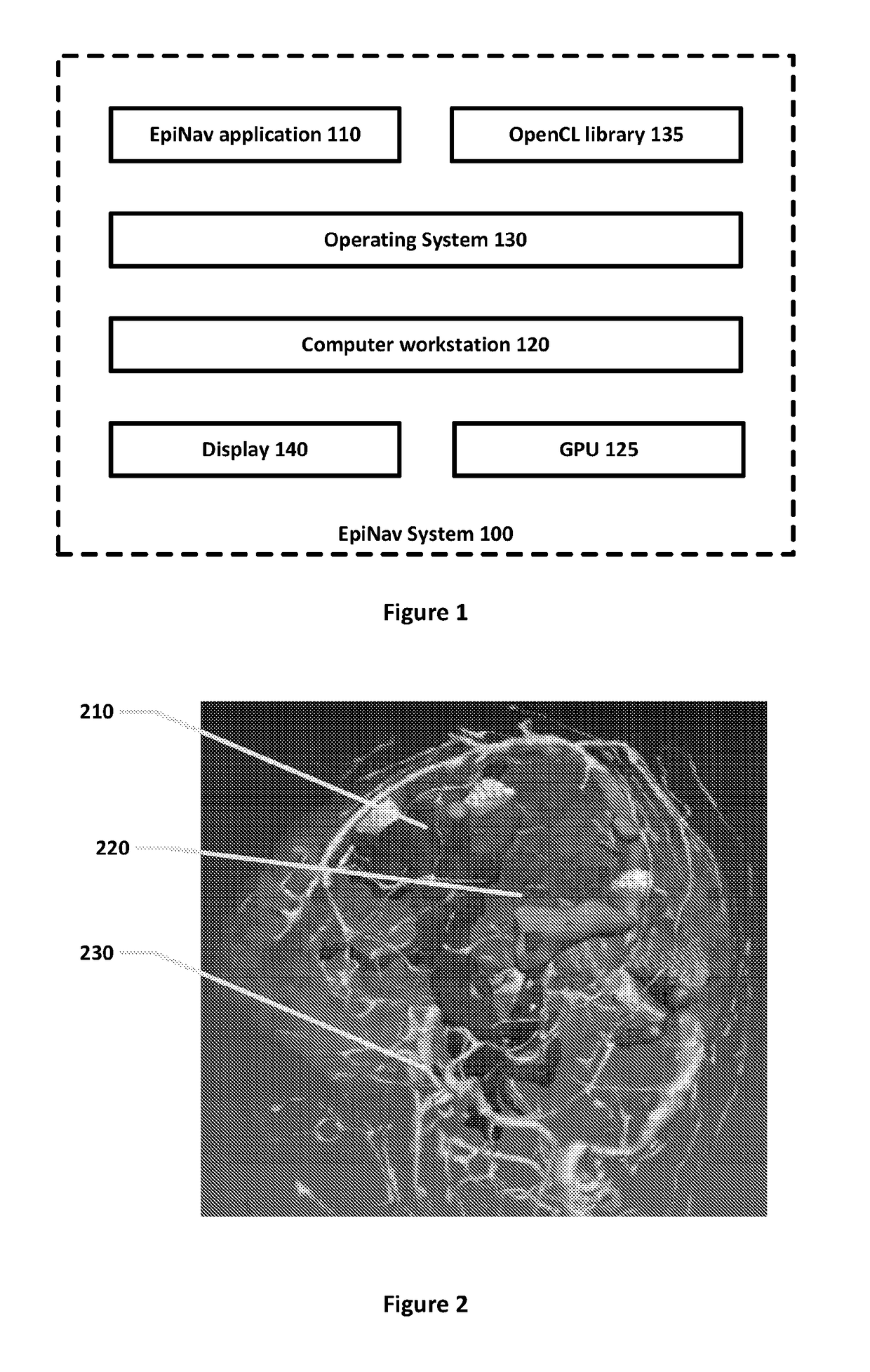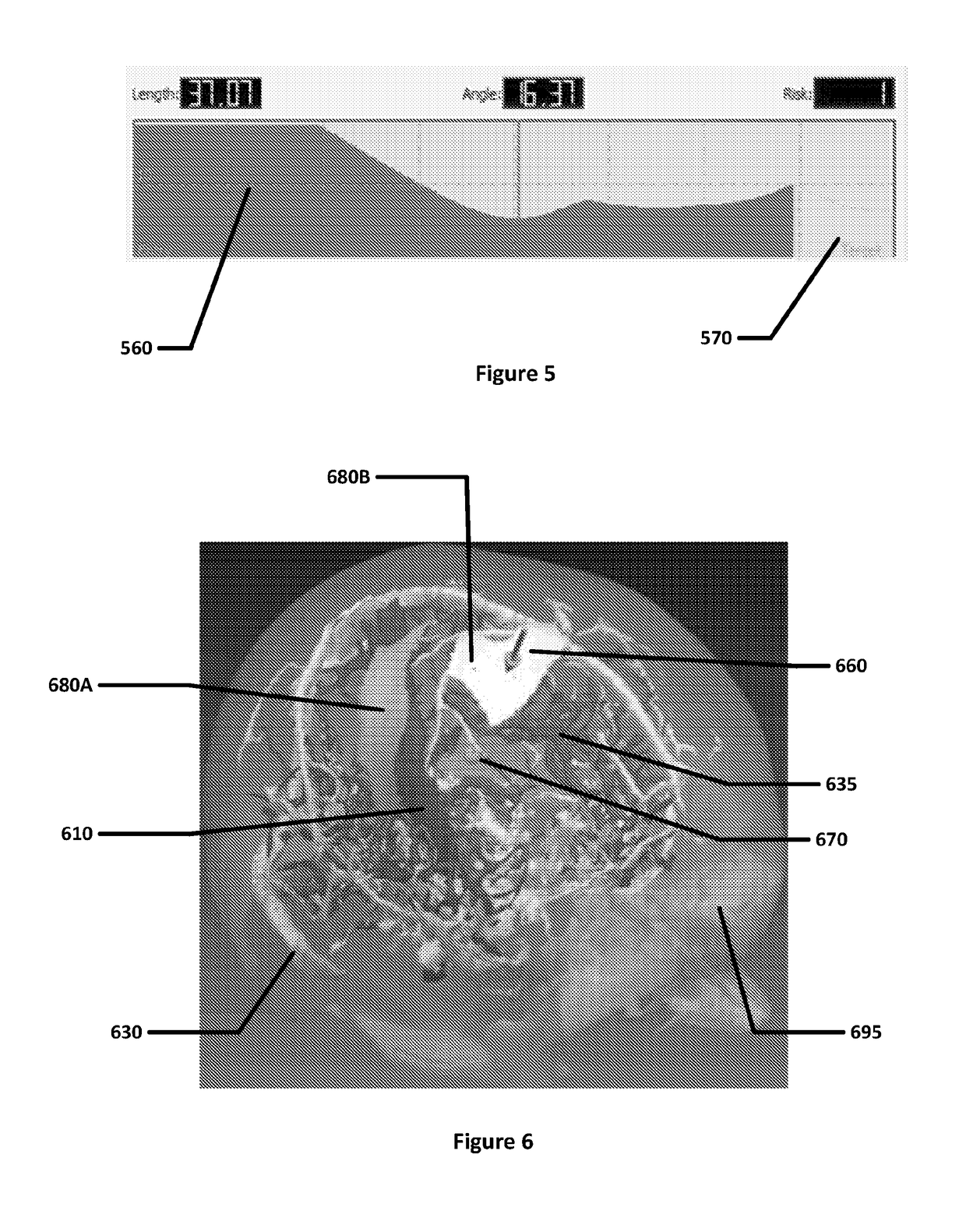System and method for computer-assisted planning of a trajectory for a surgical insertion into a skull
a technology of surgical insertion and computer assisted planning, which is applied in the field of computer-aided planning/modelling, instruments, surgery, etc., can solve the problems of invasive investigation, affecting the surgical insertion process, so as to improve the planning of intracranial insertion, provide safer trajectories, and reduce the tim
- Summary
- Abstract
- Description
- Claims
- Application Information
AI Technical Summary
Benefits of technology
Problems solved by technology
Method used
Image
Examples
Embodiment Construction
[0039]FIG. 1 is a schematic block of an interactive and responsive tool (the EpiNav™ system) 100 for the pre-operative planning of SEEG electrode placement in accordance with some embodiments of the invention. The main software application component 110 (the EpiNav application) was developed using a cross platform C++ library NifTK (www.niftk.org) that is based on the Medical Imaging and Interaction Toolkit (MITK, www.mitk.org) [14]. The software runs on a (modern) computer workstation such as a personal computer (PC) 120 which is provided with (at least one) display 140, and a (modern) graphics card (graphics processing unit, GPU) 125 which functions as general-purpose parallel processor. (The PC 120 will generally also be provided with standard accessories, such as a mouse, keyboard, etc, not explicitly shown in FIG. 1). The PC has an operating system 130, such as Mac OS X, Linux or Windows, and also has the OpenCL (Open computing language) library 135 from the Khronos Group insta...
PUM
 Login to View More
Login to View More Abstract
Description
Claims
Application Information
 Login to View More
Login to View More - R&D
- Intellectual Property
- Life Sciences
- Materials
- Tech Scout
- Unparalleled Data Quality
- Higher Quality Content
- 60% Fewer Hallucinations
Browse by: Latest US Patents, China's latest patents, Technical Efficacy Thesaurus, Application Domain, Technology Topic, Popular Technical Reports.
© 2025 PatSnap. All rights reserved.Legal|Privacy policy|Modern Slavery Act Transparency Statement|Sitemap|About US| Contact US: help@patsnap.com



